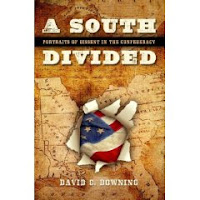
by John Baldwin, Ron Powers
From the publisher:
As the Confederacy felt itself slipping beneath the Union juggernaut in late 1864, the South launched a desperate counteroffensive to shatter the U.S. economy and force a standoff. Its secret weapon? A state-of-the-art raiding ship whose mission was to prowl the world’s oceans and sink the U.S. merchant fleet. The raider’s name was Shenandoah, and her executive officer was Conway Whittle, a twenty-four-year-old warrior who might have stepped from the pages of Arthurian legend. Whittle would share command with a dark and brooding veteran of the seas, Capt. James Waddell, and together with a crew of strays, misfits, and strangers, they would spend nearly a year sailing two-thirds of the way around the globe, destroying dozens of Union ships and taking more than a thousand prisoners, all while continually dodging the enemy.
Then, in August of 1865, a British ship revealed the shocking truth to the men of Shenandoah: The war had been over for months, and they were now being hunted as pirates.
What ensued was an incredible 15,000-mile journey to the one place the crew hoped to find sanctuary, only to discover that their fate would depend on how they answered a single question. Wondrously evocative and filled with drama and poignancy,
Last Flag Down is a riveting story of courage, nobility, and rare comradeship forged in the quest to achieve the impossible.
From Kirkus:
The story of Confederate raider Shenandoah, which preyed on Yankee shipping in an epic round-the-world voyage. Baldwin, a descendant of the executive officer who left a detailed log of that voyage, teams with Pulitzer Prize winner Powers (Mark Twain, 2005, etc.) to tell the Shenandoah's story.
While their account covers essentially the same territory as Lynn Schooler's
The Last Shot (2005), they focus on Baldwin's ancestor, Lieutenant Conway Whittle. In London, Whittle boarded Sea King, a steam-and-sail clipper that had set a record for a passage to China, He sailed to the Madeiras, where he met his fellow officers and Captain James Waddell, evidently a deeply troubled, uncommunicative man who distrusted his subordinates. The ship was renamed Shenandoah, provisioned and armed with cannon and commissioned as a Confederate warship. Her mission: to prey on U.S. commerce and weaken the federals' ability to wage war.
Shenandoah's crew was recruited from captured ships, choosing service with the C.S.A. over being held prisoner. The authors paint Whittle as a romantic hero of the Old South, obsessed with honor and eager to prevent his native land from falling prey to northern aggression. To that end, the raider attacked merchantmen and whalers from the Atlantic to the Bering Sea, where she captured or sank more than three dozen whalers before Waddell was convinced to cease operations by reports that the war was over.
Shenandoah then made her final run back to England, dodging U.S. warships and struggling to keep her crew dedicated to a suddenly pointless mission. Whittle, a southern gentleman to the end, declined a chance to escape from his ship as she lay in the Liverpool docks while British officials decided whether to turn her crew over to U.S. authorities aiming to try them for piracy. In the end, the Brits set them all free. A stirring adventure, smoothly recounted.
About the authors:
John Baldwin, a relative of Conway Whittle, is a magazine writer, lecturer, and the author of two novels. At seventeen, Baldwin was apprenticed to the ship’s carpenter on a merchant vessel sailing the ports of Africa.
Ron Powers, a Pulitzer Prize winner, is the author or coauthor of twelve previous books, among them the number one bestseller Flags of Our Fathers and the acclaimed biography Mark Twain, a finalist for the 2005 National Book Critics Circle Award.
 Edited by Peter Cozzens
Edited by Peter Cozzens


















